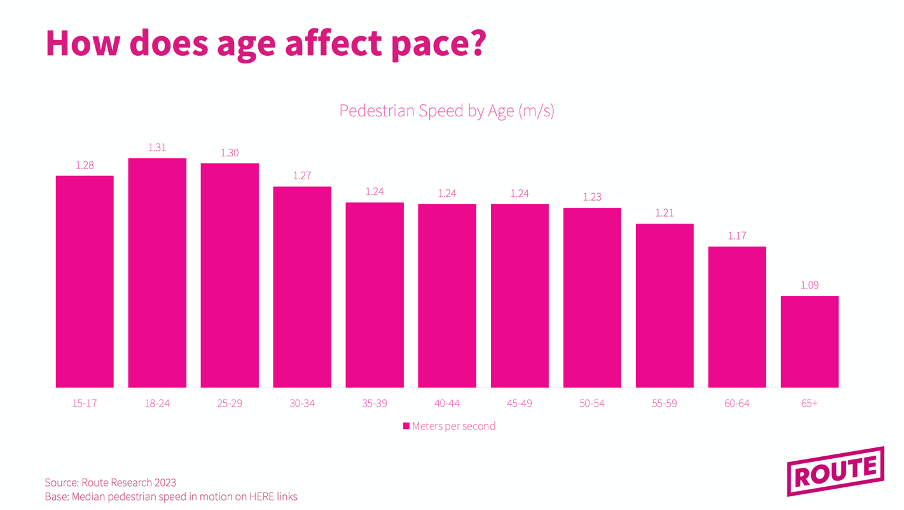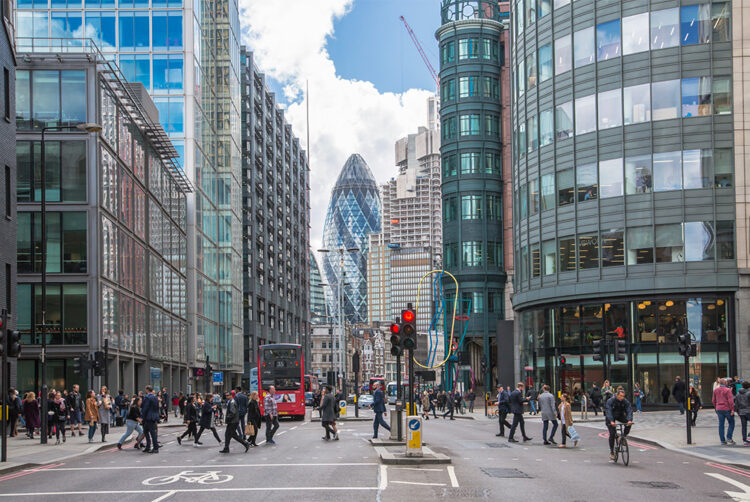Opinion
Route data points to a solid case for extending the time people have to cross the road, with implications for both safety and out-of-home advertising.
Why did the elderly pedestrian cross the road? Oh, hang on, let’s start again. This isn’t a joke. There’s a genuine — and important — societal issue at play here.
What I meant to ask is this: how long does it take an elderly person to cross the road?
Department for Transport guidelines have never been very specific or helpful here. In line with recommendations developed in the 1950s, most green (wo)man crossings have tended to give you 6.1 seconds to cross the road, whether you’re young or old, fighting fit or carrying a few extra pounds.
That may now have to change, following guidance published last week by the Government’s advisory body, Active Travel England. Its new recommendation is that the standard green man time be extended to 7.3 seconds.
And yes, you’re surely right — seemingly no part of our national life is untouched by inflation these days.
But joking aside, this is an important safety issue, especially as the balance of the population continues to skew towards older demographics… and some younger segments of the population are not quite as sprightly as they might be.
How we can measure this
And there are some fascinating out-of-home media issues at play here — and we at Route are well-placed to offer a perspective… because we already measure this sort of thing.
With my poster-person hat on, the new recommendations would seem to be good news for the OOH advertising industry. The upshot will be slower traffic, which means more time in front of ads and a greater likelihood to see them, which, in turn, means more audience and more impactful advertising.
However, switching outfits and donning my data-custodian bonnet, is it true that people are walking more slowly than before? Well, yes and no… and there are some fascinating implications to be teased out here.
Route is the audience measurement currency for out-of-home advertising, providing data on who sees posters and digital screens in Great Britain. The methodology features a passive travel survey whereby people carry a Multi-Sensor-Tracking device that records their GPS location on a second-by-second basis. This data is combined with volumetric traffic data and eye-tracking research to establish not just who is exposed to OOH advertising but who is likely to see it.
Route’s travel survey generates an unparalleled dataset on people’s movement, built up over several years. The data shows that the median pedestrian speed in Great Britain is 1.22 metres per second (2.73 miles per hour). Interestingly, this shows no statistically significant difference in the most recent data compared to that collected in 2016. It does, however, show variance by region, age, and gender.
Walk this way?
In the following analysis, we use the median (i.e., middle) speed as a proxy for typical walking speed in place of the average (mean) so as to reduce the effect of outlier journeys, which tend to be slower (e.g., where people stop for a chat and then start again). The average (mean) pedestrian speed in GB is 1.14 metres per second (2.55 miles per hour).
Some notable differences in pedestrian speeds include a gender dynamic with men travelling 7% quicker than women (at 1.27 metres per second vs. 1.19 m/s for women). Perhaps less surprising is that people’s pace drops as they age, 18-24s are the nippiest and move 20% faster than those aged 65+ (see chart, below).

As for the regional variations, while the green man crossing duration is potentially being extended just in England, have a thought for people in Wales. They’re slower than the average Brit, moving as they do at a median speed of 1.15 metres per second.
On the premise that the average two-way road width is 7.3 metres — 3.65 metres or 12 feet per lane — this would take the average person travelling at 1.22 metres per second 5.97 seconds to cross. This is just under the current 6.1 second green man threshold. However, this does not give much of a buffer and means that only people in London, Scotland, and South East England can cross in time — the slower, wending Welsh require 6.33 seconds to cross, which becomes problematic.
Further to this, the typical British woman will need 6.15 seconds, with a pensioner requiring 6.67 seconds to get across the road.
So, all in all, Route data points to a solid case for extending the time people have to cross the road, not just in England but across all of Great Britain.
Of course, the upside of this is that for those in vehicles, you’ll get 18% longer to wait… and stare lovingly at the out-of-home ads positioned so carefully in your vicinity.
Our potent medium might just have been given a further boost — more audience and more impactful advertising.

Euan Mackay is the General Manager at Route Research where he has been tackling audience measurement in out-of-home for six years. Before that he spent time at Crowd DNA and Kantar Media where he designed, led and implemented qualitative and quantitative research projects for clients across the media spectrum.
Adwanted UK is the trusted delivery partner for three essential services which deliver accountability, standardisation, and audience data for the out-of-home industry.
Playout is Outsmart’s new system to centralise and standardise playout reporting data across all outdoor media owners in the UK.
SPACE is the industry’s comprehensive inventory database delivered through a collaboration between IPAO and Outsmart.
The RouteAPI is a SaaS solution which delivers the ooh industry’s audience data quickly and simply into clients’ systems.
Contact us for more information on SPACE, J-ET, Audiotrack or our data engines.







